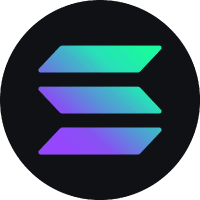

Gas DAO PriceGAS
Key data of Gas DAO
Live Gas DAO Price Today in USD
About Gas DAO (GAS)
Gas DAO: Redefining Decentralization in the Blockchain Space
The cryptocurrency universe continues to expand, and one of the most transformative innovations in the space is Decentralized Autonomous Organizations (DAOs). Through their transparent and democratic frameworks, DAOs are rebalancing power back into the hands of the people, and at the forefront of this revolution is the Gas DAO token.
Understanding Gas DAO
The Gas DAO token acts as a one-of-a-kind platform that’s dictated wholly by its community. By distributing governance tokens, it equalizes power dynamics and gives rise to collective decision making. This introduces an unprecedented level of democratization, where members, rather than a central authority, make critical decisions.
Key Features of Gas DAO Token
-
Collective Decision Making - The Gas DAO token system is fundamentally designed to empower individuals, not institutions. The abolishing of centralized control and replacing it with community-driven decision making underscore its unique democratic process.
-
Direct Ownership - In the Gas DAO ecosystem, members have direct ownership of a specific DAO’s assets. Token holders can exercise control and deploy these assets in ways that they collectively deem beneficial.
-
Community-led development – The development and growth of the Gas DAO ecosystem rely heavily on member participation. Every member has a part to play in shaping the future of the DAO, from voting on proposals to voicing ideas.
-
Incentivized Governance - The Gas DAO token incentivizes active participation through token distribution. This allows members to earn rewards by contributing to the platform's governance.
Why Gas DAO Matters?
The historical significance of the Gas DAO token cannot be overstated. In a world where power structures are often skewed, the Gas DAO token represents a system where every voice matters. By recasting roles and responsibilities, it propels a new wave of digital democracy.
DAOs like Gas DAO have the potential to democratize everything from finance to governance to entrepreneurship, with individuals across the globe having a stake and say in projects they believe in.
Conclusion
The rise of the Gas DAO token shows resilience and evolution in the crypto space. It exemplifies the true values of blockchain; decentralization, transparency, and democracy, on a fundamental level, besides defining the future path that cryptocurrencies can traverse.
With an active voice in the management and decision-making process in blockchain projects, DAO tokens are set to rapidly gain momentum in coming years, and Gas DAO is indubitably a significant part of this transformative movement.
AI analysis report on Gas DAO
Gas DAO Price Prediction
What will the price of GAS be in 2026?
What will the price of GAS be in 2031?
Hot promotions
FAQ
What is the current price of Gas DAO?
What is the 24 hour trading volume of Gas DAO?
What is the all-time high of Gas DAO?
Can I buy Gas DAO on Bitget?
Can I get a steady income from investing in Gas DAO?
Where can I buy Gas DAO with the lowest fee?
Gas DAO holdings by concentration
Gas DAO addresses by time held

Related cryptocurrency prices
Prices of newly listed coins on Bitget
How to buy Gas DAO(GAS)

Create Your Free Bitget Account

Verify Your Account

Convert GAS to USD
Buy more
Where can I buy Gas DAO (GAS)?
Video section — quick verification, quick trading

Gas DAO ratings
Additional info on Gas DAO
Coin overview
Coin-related
Trade-related








